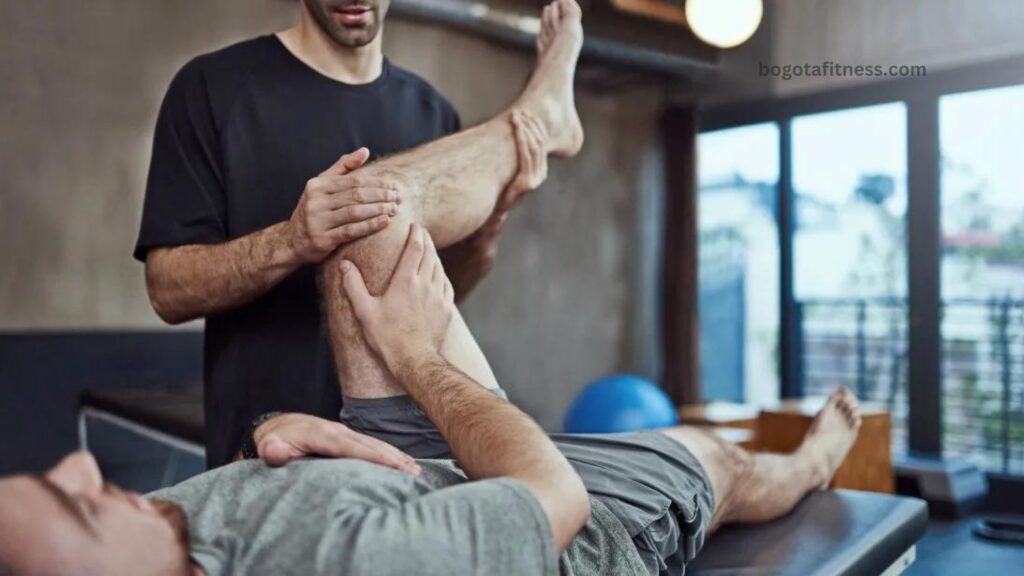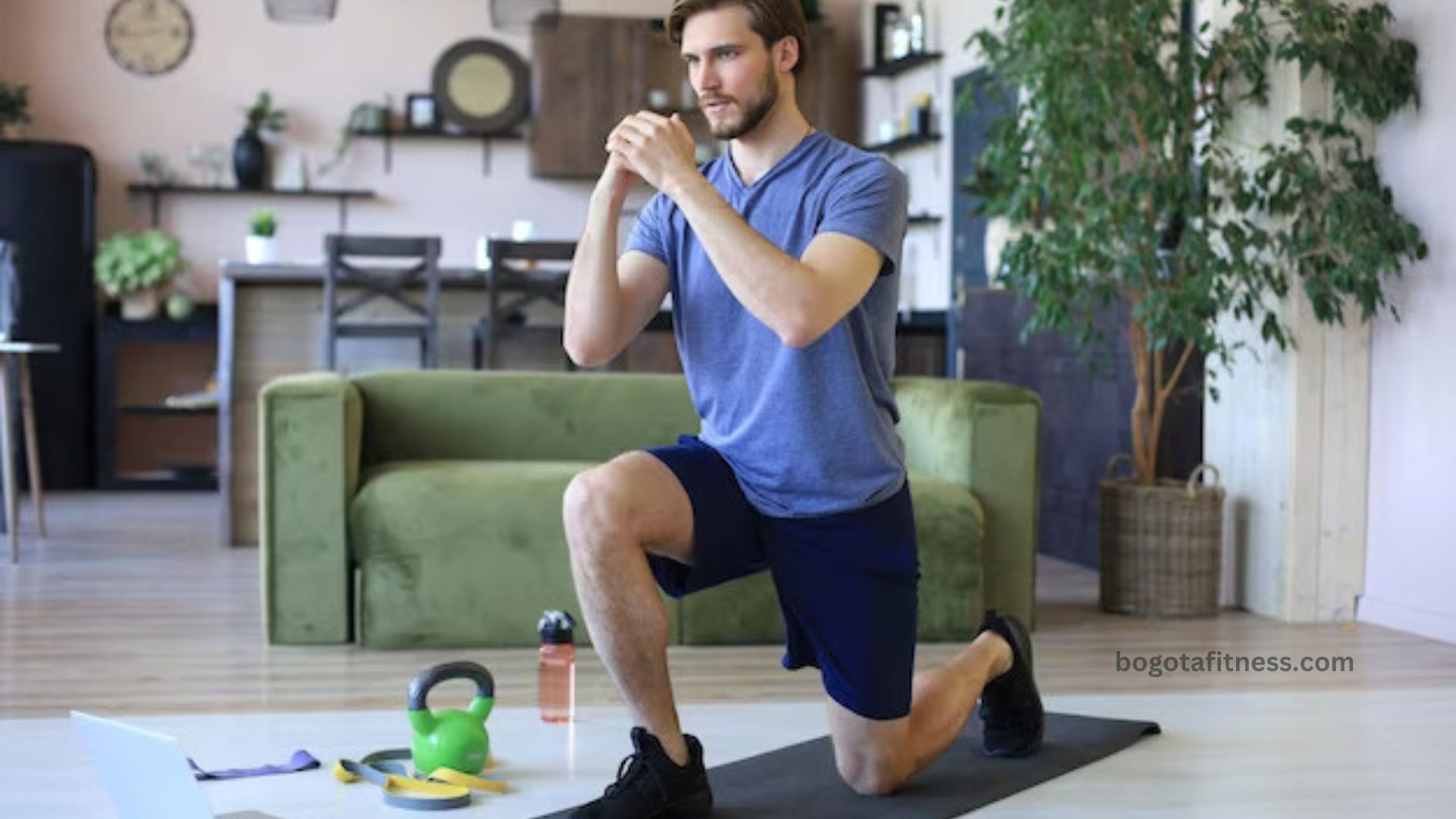The last thing you probably want to think about when you approach any fitness goal, no matter how big or small, is being hurt. However, it does happen occasionally: A newbie strains a muscle when they don’t warm up correctly before lifting weights, someone trains for a marathon for months and twists their ankle just weeks before the race, and so on. Exercise-related injuries can occur to anyone, regardless of experience level or fitness level. Fortunately, there are a number of proven strategies for reducing the risk of injuries.
We discussed injury prevention with two physical therapists and a Peloton teacher to find out what information both novice and seasoned athletes should know. See their tips on achieving your objectives and preventing exercise injuries below.
What Is Injury Prevention in Fitness?
The key to preventing injuries is to prime your body for performance without generating discomfort or requiring a lengthy recuperation period after exercise. To feel and perform at your best, you need to maintain your strength and health. There are two kinds of sports injuries you should stay away from: traumatic and non-traumatic.
Training errors are a major contributing factor to non-traumatic sports-related injuries, according to Karen C. Westervelt, PT, PhD, head of the University of Vermont’s integrative health education program and clinical associate professor. “Training errors include using the same workout routine consistently, performing too much too quickly, not taking enough time for recovery, and not cross-training.”
Keeping these fundamental ideas in mind, we’ll concentrate on non-traumatic injuries (such sprains and strains) and how to help avoid them in the future when you work out.
Common Causes of Exercise Injuries
Certain sports injuries may occur more frequently than others, depending on your level of experience and fitness. Charlotte Weidenbach, a physician and Peloton teacher, points out that exercise or sport participation is another important component.

Keep an eye out for the following typical causes of exercise-related injuries:
1. Doing Too Much Too Soon
Beginners may demand too much too soon during a workout since they frequently want to see benefits quickly. According to Westervelt, “Our bodies are very good at responding to the work we ask of them, but they need time.” Muscle strain can occur when a muscle is asked to perform more work than it is capable of handling.
According to Elijah Hazzard, PT, DPT, clinical director of All Star Physical Therapy Desert Hot Springs, newcomers who attempt too difficult or complicated of exercises frequently suffer from ligament strains.
“In these cases, the exercise novice will inadvertently use their connective tissues to help with performing the exercise instead of using their muscles to perform any given exercise and to stabilize each joint in complex movements,” says Hazzard. “This can result in an excessive amount of tension on a particular ligament, and before you know it, a bothersome ligament sprain will appear and persist without sufficient rest.”
2. Improper Form
Other injuries that are frequently linked to beginners are the consequence of bad form or skill. “Cyclists who ride with their seat not at the proper height frequently experience patellofemoral knee pain,” Westervelt explains, referring to discomfort felt at the front of the knee. Regardless of the exercise you’re performing, it’s imperative that you set up the equipment appropriately and safely, pay attention to your form, and heed any cues or instructions from the instructor.
Also Read: EFFICIENT WORKOUT TIPS FOR BUSY SCHEDULES
3. Overuse
Overuse is occur when you don’t relax or recover sufficiently, whether you’re training continuously for a specific fitness goal or you just enjoy a new workout and want to do it over and over again. It’s crucial to strike the right balance and ease into a regimen for both inexperienced athletes and seasoned gym goers.
Let’s take an example where someone has just started running and wants to keep going. “People who are new to running may enjoy their new 5K training, but they do not complement their running program with appropriate strength or resistance training,” claims Hazzard. “This new exerciser is susceptible to injuries from posterior tibialis tendonitis at the ankle or patellar tendonitis at the knee.”
4. Muscle Imbalance
Muscle imbalances can also lead to exercise-related ailments. “Adding some variety to your workout benefits both your body and mind,” says Westervelt. When you train out the same way over and over again, some muscles may get incredibly powerful while others may not get as much exercise. An imbalance in strength across the joint may result from this, increasing the risk of pain and damage.
5. Insufficient Warm-Ups and Stretches
According to Dr. Charlotte, neglecting to warm up or stretch appropriately raises the risk of overuse, muscle imbalance, and improper form. “You can reduce your risk of all those things with a targeted, accurate, and sufficient warm-up and stretching routine,” she explains.
Fitness injuries are common, regardless of workout level, but fortunately, they can occasionally be avoided. You can be more mindful of what can occur when you push yourself too hard during a workout or neglect to take a break after a strenuous exercise session if you are aware of these primary injury causes. Is it possible to attempt and stop these causes from ever occurring in the first place?
7 Tips for Preventing Injuries During Workouts

According to Westervelt, “there are some things you can do to help stay injury-free, but there is no way to prevent injury completely. Prevention of injuries is multifactorial.” Our specialists have provided some crucial advice for preventing injuries, which you should remember:
1. Perform Dynamic Warm-Ups
Preventing injuries is something you should do both before and after your workout. “It is imperative to warm up,” says Dr. Charlotte, adding that your warm-up should be tailored to your planned workout and incorporate dynamic, active stretching.
2. Cool Down and Stretch
You might be tempted to jump in the shower as soon as you finish working out, but give yourself some time to thoroughly cool down and perform some static stretches first. Stretching your quads, hamstrings, and erector spinae is crucial if you’re not sure where to start. The precise stretches you should perform depend on your body’s needs, your fitness objectives, and your routine.
3. Hydrate
Hazzard emphasizes that in order to do your workout correctly, make sure you’re consuming adequate water. Maintaining proper hydration is essential for maintaining your fluid balance, lubricating your joints, and providing your body with overall nourishment.
4. Check Your Form
Hazzard suggests, “Whenever possible, have someone watch your form.” It really helps to have a trainer, rehab specialist, or trusted exercise partner assess your movements. Additionally, you can record and evaluate your own form if you are a seasoned exerciser.
5. Switch up Your Routine
Long-term benefits come from varying up your exercise regimen and avoiding monotonous repetitions of the same exercises. Hazzard advises, “Move in a different way every day,” emphasizing the significance of good balance and recuperation for preventing injuries.
6. Listen to Your Body
It’s important to recognize your boundaries because while pushing yourself comfortably and within reason might be beneficial, you don’t want to overdo it. It could take some time, and seasoned athletes might comprehend this better than novices, but according to Hazzard, “if it feels like you are not doing something right, you likely are not.” “In this case, it might be advisable to attempt a less complicated or demanding version of the activity you are attempting to do.
7. Know When to Stop
What is the most crucial thing to keep in mind, in Dr. Charlotte’s opinion? When it hurts, stop. She emphasizes that, despite your ambition’s best efforts to persuade you otherwise, you must never overlook any damaging suffering (the kind that goes beyond ordinary fatigue from exercise). Dr. Charlotte says that carrying on with your workouts under these situations “will just hurt your progress in the long run.” “It’s preferable to see a specialist sooner rather than later, when the damage has already become chronic.”
Although there are a few things to remember for preventing injuries, each person is unique. For this reason, the last piece of advice is crucial: discontinue the workout if something doesn’t seem right. Naturally, Dr. Charlotte advises speaking with your doctor or physical therapist about any worries you may have and getting checked out by a specialist.
Final Thoughts
While it is impossible to totally avoid getting hurt, there are some best practices you can follow to try and keep yourself as healthy as possible. Since every person exercises differently, the best ways to prevent injuries depend on your expertise level, your favorite activities, and your performance objectives.
Your chances of suffering a sports injury can be reduced by emphasizing correct form and technique, drinking plenty of water, being aware of your limitations, and scheduling adequate warm-up and cool-down periods. When in doubt, seek professional advice, and keep in mind that you must recover and rest in between sessions.




